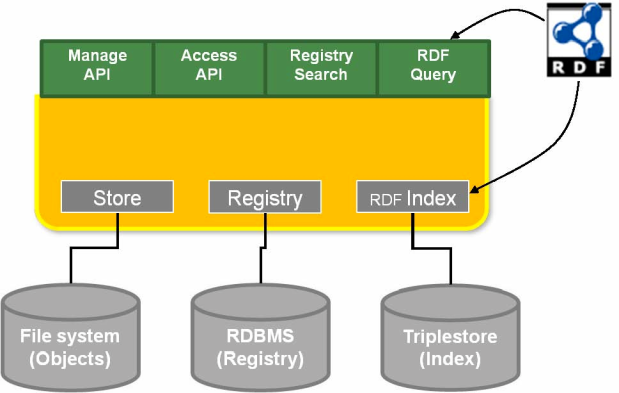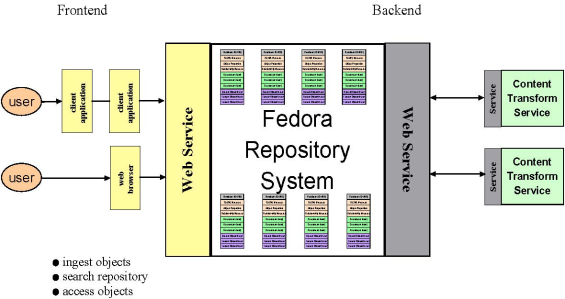Page History
...
Figure 5 illustrates the required relationships between fundamental object types in the CMA. In the CMA object serialization these relations are asserted as RDF statements in the digital objects' RELS-EXT Datastream. These relations are asserted only in the object at the origin of each arrow though typically these relations will be harvested and indexed within utilities such as Semantic Triplestores or relational databases to enable fast query over them, or into caches which permit rapid access to their functionality.
The "hasModel" relation identifies the class of the Data object. There may or may not be a Fedora digital object that corresponds to the identifier. If the identifier refers to an object it must be a CModel object and contain the base content model document. It is expected that many Data objects conform to a single Content Model (and have a relation asserted to the same CModel object). The Content Model characterizes the Data objects that conform to it.
The SDef object describes a Service and the Operations it performs. Defining a Service is the means by which content developers provide customized functionality for their Data objects. A Service consists of one or more Operations, each of which is an endpoint that may be called to execute the Operation. This approach is similar to techniques found in both object-oriented programming and in Web services. The CModel object uses the "hasService" relation to assert that its' class members provides a Service (and its associated Operations). A CModel is free to assert relations to more than one Service. A Service may be related to many CModels.
Deployment of a Service in a repository is accomplished by using the "isDeploymentOf" relation to the SDef object. The Service Deployment (SDep) object is local to a Fedora repository and represents how a Service is implemented by the repository. Finally, the SDep object asserts the "isContractorOf" to indicate the CModel (effectively the class of Data objects) for which it deploys Services. This permits the SDep to access the Datastreams in the Data object and user parameters when an Operation is called for a Data object.
Section 4: Fedora Repository Server
Thus far, we have talked about the component parts of a Fedora repository, but the larger picture is also important. A repository is made up of digital objects, but in what context do those objects exist and how is it that users interact with them?
Fedora Server Architecture
Figure 6: Fedora System Architecture (simplified)
This diagram shows in very general terms the structure of the entire repository. Users interact with the content of the repository by means of client applications, web browsers, batch programs, or server applications. These applications access the repository's data by
means of the four APIs by which Fedora is exposed: management, access, search, which are exposed via HTTP or SOAP, and the OAI provider API, which is exposed via HTTP.
Client and Web Service Interactions
This diagram gives another view of the larger context of a Fedora repository. Users perform common tasks such as ingesting objects, searching the repository, or accessing objects via client applications or a web browser. These client applications mediate this interaction with the repository via web services on the frontend, and on the backend, the repository interacts with web services to perform any data transformations that are requested by users. The transformed data is then passed back to the user via the frontend web services.
It is important to note that users only interact with the repository via the APIs, even though it may sometimes seem that they are interacting directly with an object, they are not.
Figure 7: Client and Web Services Interaction
Overview
Content Tools

